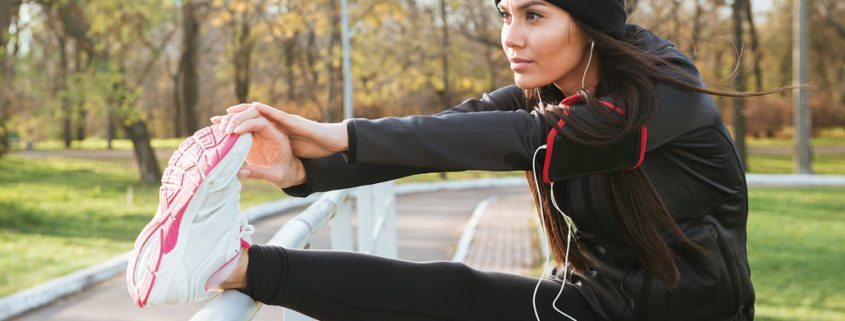Athletes and Varicose Veins
Most people associate varicose veins with pregnant or overweight, sedentary individuals, but did you know that even active, healthy adults can be plagued with this condition? Athletes who spend much of their time on their feet can place a lot of strain on the veins of the lower legs, which can lead to the development of varicose veins in the lower thighs and calves.
Certain sports, such as weightlifting, skiing, and backpacking, force the legs to support heavier weight over longer periods of time. Repetitive-motion activities—including tennis, cycling, and running—also increase the strain on the veins in the legs. The greater the intensity and regularity of the sport, the higher the likelihood of occurrence, but even occasional participation can result in varicose veins.
Our veins bring blood back to the heart, but when we walk or stand, the veins in our legs must battle gravity. If the valves in our leg veins aren’t working properly, some of the blood pools in the veins and puts pressure on the lower legs, resulting in unsightly varicose veins. During exercise, the muscles require more oxygen, so more blood comes down the legs through the arteries. This extra blood needs to be brought back up through the veins, but if the veins are not functioning properly, a lot of the blood stays down in the lower legs.
Symptoms of varicose veins may include tired or heavy legs after exercising, throbbing or heaviness in the legs, and localized pain and/or swelling. Only in extreme cases will these vein problems hinder athletic performance, and some varicose veins may even be asymptomatic, but even so, it is still a good idea to get any varicosities checked out, whether they are hindering athletic performance or not.
Although excess weight and inactivity are common factors contributing to varicose veins that don’t necessarily affect healthy athletes, other factors can play a role. If one of your parents has a vein disease, you are 33 percent more likely to have one as well. Your risk factor jumps to 90 percent if both parents have a vein condition. Women are more likely to develop varicose veins, as are people over age 50. Other risk factors include pregnancy and hormonal fluctuations. Although there is little you can do to avoid these risk factors, there are steps you can take to lower your risk of varicose veins.
If you’re already physically active, you can still add other preventive measures—including elevating your feet in the evenings and after exercising, as well as wearing compression stockings, to aid in healthy blood flow. Maintaining a diet low in sodium and high in fiber will help prevent water retention and constipation, factors that can increase your risk for varicose veins.
If you are still plagued by varicose veins, despite being physically active and taking preventive measures, it may be time to seek treatment. At Vein Center of Indiana, we offer many nonsurgical, noninvasive treatment options, including Endovenous Laser Therapy (EVLT), ambulatory phlebectomy, and sclerotherapy. Patients report little to no pain and are back to their usual activities with little downtime.



